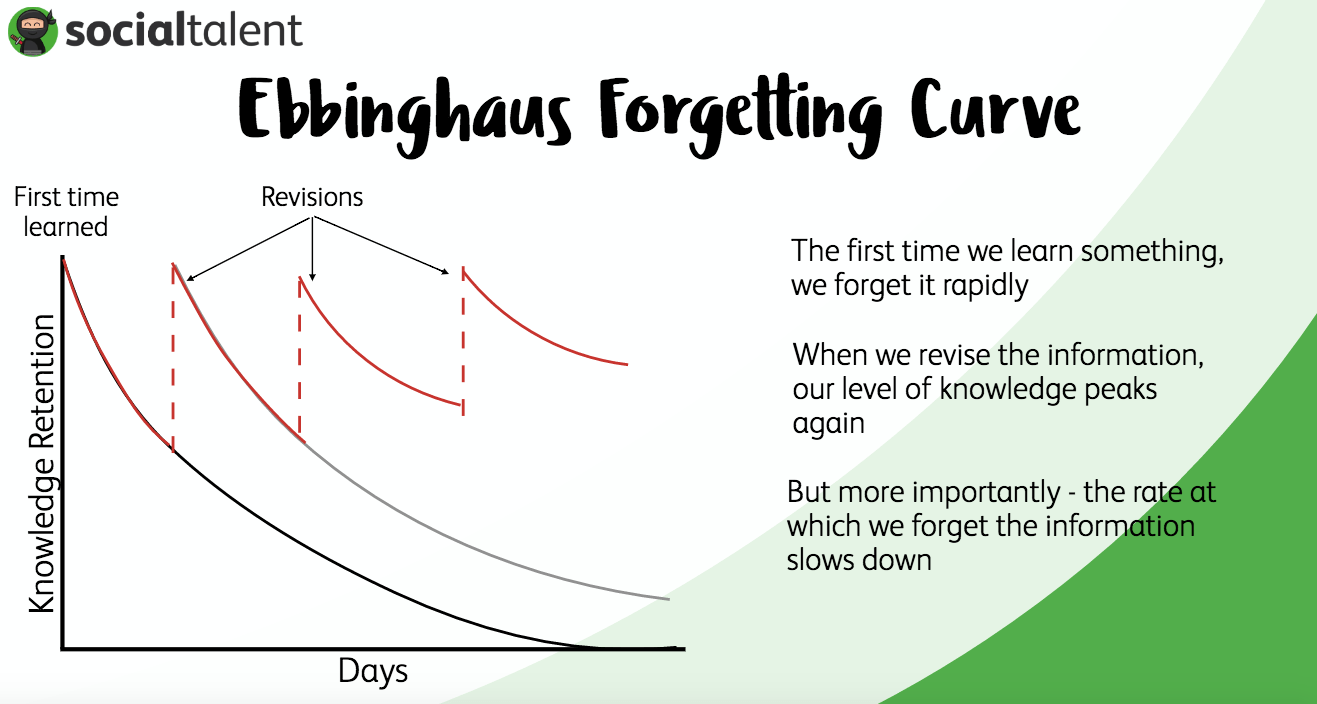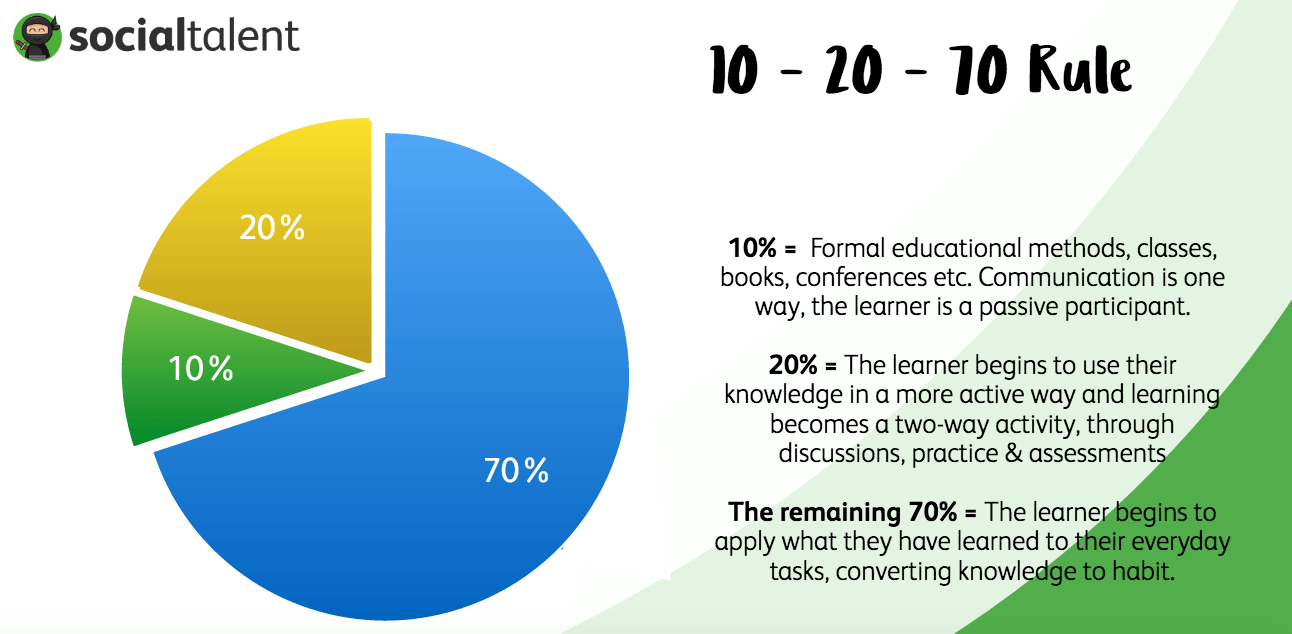The Secret To Investing in Learning That Sticks

For years I have been working in the area of learning and development both in the academic and corporate world. I have learned, that there is much more to learning than presenting and delivering high-quality content. We all know that in today’s world if we don’t stay current and continually invest time into personal development, we will inevitably fall behind. But how do we keep on top of all of the above and maintain a work-life balance?
Let’s look at what the experts have been telling us about Learning and Development for years.
The Ebbinghaus forgetting curve highlights the importance of revisiting the new knowledge and methods we are taught inside the classroom. Ebbinghaus suggests if the student does not revisit what they have learnt over a set time period their ability to retain the knowledge deteriorates. After 31 days, they will retain only 20% of what they learned. In the world of business, 31 days isn’t very long and 80% of new information is a lot to forget.

Ebbinghaus Forgetting Curve
How can we improve the return on learning?
McCall put forward the 70:20:10 model for learning and development, also dubbed the learning lifecycle.
The model gives organisations some answers as to why they are not seeing a positive ROI on training initiatives- as they tend to focus on the formal learning segment only. McCall indicates that for an L&D project to be a success there needs to be careful consideration placed into each of the three stages of learning; Consumption, Application, Retention

McCall’s 70-20-10 learning model
McCall’s 10%: Learning
Although formal learning only represents 10% of the learning life-cycle it would be commercial sabotage to think of it as less important than the other two segments. Some L&D professionals would argue that it is the most important part of the cycle.
McCall’s 20%: Application
I know I hear you. “It is hard enough getting people to do the learning, how the hell do we get them to talk about it away from the learning environment, are you mad!?”. Not quite, gamification has been strongly linked to creating the buzz and excitement you need to help keep energy and motivation levels high.
McCall’s 70%: Retention
After all the important stuff we have talked about up to now is all in vain if you miss this third and final, a step that is often missed by organisations and in my opinion probably the most important step. Implementing new knowledge, tools, and hacks into your everyday workflow is key to turning new knowledge into a behaviour of habit.
Reward good behaviour
To complete the learning loop rewards we need to focus on a final important factor- recognition. David Novak wrote a paper for the Harvard Business Review and highlighted some interesting facts in his research. Novak found that 82% of American workers feel their supervisors/managers didn’t give them the recognition for a job well done. With this in mind, did you know that 40% of American workers would put more energy into their work if they were recognised more often and I’m sure these stats are similar across the globe. So, how do we achieve this in the workplace Ed, I can’t stand over everyone’s shoulder looking for good practice.
So let’s get this straight- in order to see a real return on learning you need to supply training, offer real time learning and knowledge sharing and then reward and recognition!? Thankfully this is what we have based SocialTalent’s platform on. Take a look at how we helped Groupon’s recruitment team realise the importance of the return on learning.
Edward McDermott delivers lectures and executive workshops for the Institute of Technology Tallaght and the Irish Management Institute. Areas of expertise and interest are learning and development, change management, project management, negotiation skills and techniques, and sales. Follow him on Twitter and/or connect with Ed on LinkedIn.
